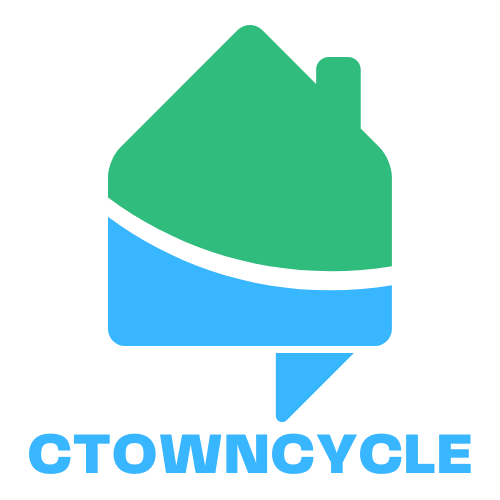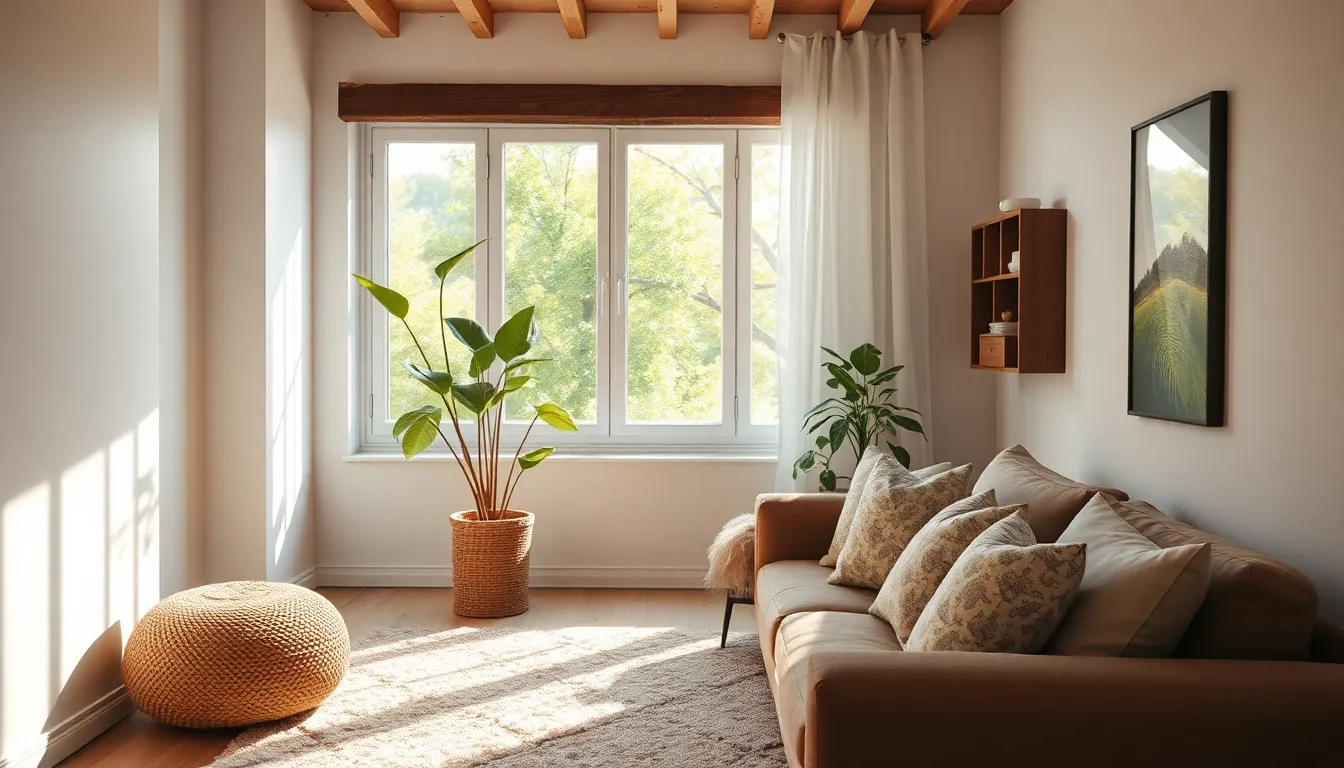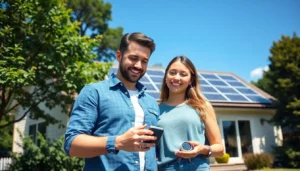Table of Contents
ToggleIn a world where saving the planet feels like a full-time job, eco-friendly insulation is the superhero we didn’t know we needed. Forget about those bulky, energy-sucking materials of the past. Today’s green insulation options are here to save the day—while keeping your home cozy and your energy bills low. It’s like giving your house a warm hug without the guilt of harming Mother Earth.
What Is Eco-Friendly Insulation?
Eco-friendly insulation refers to materials designed to enhance energy efficiency while minimizing environmental harm. These alternatives to traditional insulation methods distinguish themselves through their sustainable production processes and effectiveness in regulating indoor temperatures.
Definition and Importance
Eco-friendly insulation comprises materials that offer thermal regulation with reduced ecological impacts. Its significance lies in minimizing energy consumption, thereby lowering utility bills. By employing these materials, homeowners contribute to a healthier planet through decreased carbon footprints. Emphasizing sustainability, eco-friendly insulation solutions often contain recycled or natural components that help improve indoor air quality. They stand out as modern advancements in insulation technology.
Types of Eco-Friendly Insulation
Numerous options exist within the realm of eco-friendly insulation materials. Cellulose insulation, made from recycled paper, effectively reduces energy loss. Another option, fiberglass insulation manufactured with recycled glass, showcases excellent thermal efficiency. Wool insulation, derived from sheep’s wool, provides natural properties that regulate moisture and temperature. Cotton insulation, sourced from recycled denim, offers a sustainable alternative with added soundproofing benefits. Lastly, straw bale insulation utilizes agricultural waste for energy-efficient building practices. Each type serves distinct needs while supporting environmental sustainability.
Benefits of Eco-Friendly Insulation
Eco-friendly insulation offers several advantages, making it a viable choice for energy-efficient and sustainable homes. These benefits enhance comfort and support a healthier living environment.
Energy Efficiency
Energy efficiency ranks among the primary benefits of eco-friendly insulation. This type of insulation significantly reduces heat loss in winter and keeps homes cooler in summer. Research shows that proper insulation reduces energy consumption by 15 to 30 percent, resulting in lower utility bills. Insulation materials such as cellulose and fiberglass capture air effectively, preventing drafts and maintaining stable indoor temperatures. Enhanced energy performance enables homeowners to enjoy comfortable living spaces while minimizing their reliance on heating and cooling systems.
Health and Safety Advantages
Health and safety advantages also characterize eco-friendly insulation. Traditional insulation often contains harmful chemicals, which can negatively affect indoor air quality. In contrast, eco-friendly options like wool and cotton are safe and non-toxic. These materials often help decrease allergens and pollutants, contributing to a healthier indoor environment. Moreover, many eco-friendly materials possess fire-resistance properties, offering additional safety. By choosing these sustainable solutions, homeowners invest in their well-being as well as that of the planet.
Popular Eco-Friendly Insulation Materials
Eco-friendly insulation materials play a crucial role in enhancing energy efficiency and ensuring sustainability. Below are several popular options.
Cellulose Insulation
Cellulose insulation contains up to 85% recycled paper products, making it a highly sustainable option. It effectively reduces heat loss and helps homes maintain comfortable temperatures. Additionally, cellulose creates a barrier against sound transmission, increasing indoor comfort. This material is treated for fire resistance, ensuring safety in various applications. Studies suggest it can decrease energy consumption by 30% or more. Property owners looking for an efficient insulating solution often prefer cellulose for its ecological impact and performance.
Sheep’s Wool
Sheep’s wool offers natural insulation properties while being biodegradable and renewable. Capable of regulating humidity, it absorbs excess moisture, enhancing indoor air quality. Health-conscious individuals appreciate that this material contains no harmful chemicals. Wool insulation provides excellent thermal performance, reducing heating and cooling costs significantly. Its resilience against pests adds to its appeal. Many homeowners value wool as a dependable choice for eco-friendly insulation because of its performance and sustainability.
Spray Foam Insulation
Spray foam insulation provides superior air sealing, reducing drafts and enhancing energy efficiency. Made from renewable resources, this material expands upon application, filling gaps that traditional insulations may miss. Its durability and effectiveness in preventing moisture buildup contribute to its popularity. Additionally, it boasts impressive R-values, indicating insulation effectiveness. Property owners often choose spray foam for irritating noise reduction and environmental benefits. Its versatility in various applications makes it a frequent choice for eco-conscious construction.
Installation Considerations
Installation of eco-friendly insulation requires careful planning and attention to detail. Choosing the right method affects both effectiveness and efficiency.
Professional Installation vs. DIY
Professional installation offers expertise and quality assurance. Experts understand building codes and safety measures necessary for optimal performance. Using professionals often leads to better insulation coverage, reducing gaps that can cause energy loss. On the other hand, DIY projects provide flexibility and cost savings. When homeowners opt for DIY, they should ensure they follow manufacturer guidelines to maximize effectiveness. Certain materials, like spray foam, may need specialized equipment that complicates DIY efforts. Evaluating skills and tools before proceeding becomes crucial for a successful installation.
Cost Factors
Cost plays a vital role in choosing eco-friendly insulation options. Prices for materials like cellulose or wool may vary based on availability and local market conditions. Homeowners should consider long-term savings when calculating expenses. While upfront costs for materials might seem high, energy efficiency often results in lower utility bills, ranging from 15 to 30 percent savings over time. Additionally, initial installation costs can fluctuate based on whether professionals are hired or if a DIY approach is chosen. Budgeting for potential additional expenses, such as tools or permits, remains essential for a comprehensive understanding of total costs.
Conclusion
Investing in eco-friendly insulation is a smart choice for homeowners seeking comfort and sustainability. By opting for materials that enhance energy efficiency and reduce environmental impact, individuals can significantly lower their utility bills while promoting a healthier living space.
The variety of available options, from cellulose to wool, allows for tailored solutions that meet specific needs and preferences. With proper installation and planning, these materials not only improve indoor air quality but also contribute to long-term energy savings.
Choosing eco-friendly insulation is more than just a home improvement; it’s a commitment to a greener future. Embracing these innovative solutions helps pave the way for a more sustainable lifestyle while ensuring homes remain cozy and inviting year-round.





